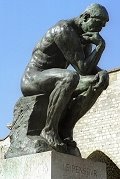Teaches such beauty as a woman's eye?"
Love's Labour's Lost, act iv. sc. 3.
It has long been a disputed question as to what has been the recognised favourite colour of the eyes, the poets of all ages having laid much stress on the chameleon-like iris of the eye, which ever seems to vary in its green or bluish hue. Thus Homer speaks of Minerva as the "blue-eyed goddess," an epithet which has given rise to considerable comment, opinions having largely differed as to whether the poet meant this colour, or something between a green, blue, or grey.
Green eyes are often mentioned in classic literature, and they found special favour with early French poets, who were extremely fond of speaking of them under the title of yeux vers--a taste which seems to have been generally prevalent on the Continent. The Spaniards considered this colour of the eye an emblem of beauty, and as such there is an amusing allusion to it in "Don Quixote":--"But now I think of it, Sancho, thy description of her beauty was a little absurd in that particular of comparing her eyes to pearls. Sure, such eyes are more like those of a whiting, or a sea-bream, than those of a fair lady; and in my opinion Dulcinea's eyes are rather like two verdant emeralds, veiled in with two celestial arches, which signify her eyebrows. Therefore, Sancho, you must take your pearls from her eyes, and apply them to her teeth, for I verily believe you mistake the one for the other!" And we may quote the subjoined well-known lines in praise of green eyes, which show, like many others of the same kind, in that high esteem they were formerly held:--
Ay los mis ojuelos,
Ay hagan los cielos,
Qui de mi te acuerdos."
Before the emeralds, whence love erewhile
Hath drawn his weapons on thee"--
In our own country we find no lack of allusions to green eyes, and in the "Two Noble Kinsmen " AEmilia, in her address to Diana, says: "Oh, vouchsafe with that thy rare green eye, which never yet beheld things maculate!" On the other hand, Shakespeare speaks of jealousy as "a green-eyed monster," and we know that the phrase has been frequently used in an uncomplimentary manner. But this is the exception, for what more pleasing, or graceful, instance of their being in repute as an object of beauty can be quoted than that given by Frances Collins, who tells us that her husband in writing to a certain lady always spoke of her eyes as sea-green:--
And let those sea-green eyes divine,
Pour their love-madness into mine."
To paint my mistress in her bloom;
Caught her eyes, the soft sea-green,
At a summer noontide seen."
A pretty girl, and in her tender eyes
Just that soft shade of green we sometimes see
In evening skies."
All Auristella's parts, except her eyes;
To make those twins two lamps in beauty's skies,
The counsel of her starry synod sought.
Mars and Apollo first did her advise,
To wrap in colour black those comets bright,
That love him so might soberly disguise,
And unperceived wound at every sight.
Chaste Phoebe spake for purest azure dies,
But Jove and Venus, green about the light,
To frame thought best, as bringing most delight,
That to pined hearts hope might for ay arise.
Nature, all said, a paradise of green
There placed, to make all love which have them seen."
Like April's kissing May;
O fervid eyelids, letting through
Those eyes the greenest of things blue,
The bluest of things grey."
Blue eyes most please at evening fall;
The black a conquest soonest gains,
The blue a conquest best retains;
The black bespeaks a lovely heart,
Whose soft emotions soon depart;
The blue a steadier frame betray,
Which burns and lives beyond a day;
The black the features best disclose,
In blue my feelings all repose;
Then each let reign without control,
The black all mind, and blue all soul."
Staring, winking at the skies";
Clear as the waters of a brook that run,
Limpid and laughing in the summer sun."
Than those that mock the hyacinthus bell"--
Of Cynthia--the wide palace of the sun,
The tent of Hesperus, and all his train,
The bosomer of clouds, gold, grey, and dun.
Blue! 'tis the life of waters--Ocean
And all its vassal streams: pools numberless
May rage, and foam, and fret, but never can
Subside, if not to dark-blue nativeness.
Blue! gentle cousin of the forest-green,
Married to green in all the sweetest flowers,
Forget-me-not, the Bluebell, and that Queen
Of secrecy, the Violet: what strange powers
Hast thou, as a mere shadow! But how great,
When in an Eye thou art alive with fate!"
And there are numerous rhymes in this country to the same effect; one current in Warwickshire running thus:--
Do your mother's duty;
Black eye,
Brown eye,
Grey-eyed--greedy gut,
Eat all the world up."
Black eye--steal pie.
Grey eye--greedy gut.
Brown eye--love pie."
Blueness about the eyes, too, was considered a certain indication of love, and, to quote Lord Lytton's words, there is "a liquid melancholy of sweet eyes;" which reminds us of the simile of the Persian poet, who compares "a violet sparkling with dew" to "the blue eyes of a beautiful girl in tears;" and we may compare the remark of Rosalind to Orlando in "As You Like It " (act iii. sc. 2), who enumerates the marks of love, "a blue eye and sunken, which you have not."
Another favourite colour of the eye was grey, and Douce, in his "Illustrations of Shakespeare," quotes from the interlude of "Marie Magdalene" a song in praise of her, which says, "Your eyes as grey as glass and right amiable;" and, in the "Two Gentlemen of Verona" (act iv. sc. 4), Julia makes use of the same expression.
Black eyes have occasioned many curious fancies respecting them--some complimentary, and others just the reverse. Lord Byron, for instance, describing Leila's eyes, in the "Giacour," says:--
But gaze on that of the gazelle,
It will assist thy fancy well:
As large, as languishingly dark,
But soul beam'd forth in every spark."
Were black as death, their lashes the same hue
Of downcast length, in whose silk shadows lies
Deepest attraction; for when to the view
Forth from its raven fringe the full glance flies,
Ne'er with such force the swiftest arrow flew."
Or if it were it bore not beauty's name,
But now is black beauty's successive heir."
Scottish history affords a good specimen of a dark woman in the famous "Black Agnes," the Countess of March, who was noted for her defence of Dunbar during the war with Edward III., maintained in Scotland from 1333 to the year 1338.
That brawling, boisterous, Scottish wench;
Came I early, came I late,
I found Black Agnes at the gate."
The Mahometan heaven is peopled with "virgins with chaste mien and large black eyes," and we may quote what the poet of woman's lore says:--
May in triumph let fly
All its darts without caring who feels 'em;
But the soft eye of blue,
Tho' it scatters wounds too,
Is much better pleased when it heals them.
The blue eye half hid
Says from under its lid,
I love, and am yours if you love me,
The black eye may say,
Come and worship my ray,
By adoring, perhaps you may win me."
Brown-eyed needy,
Black-eyed never likin',
Till it shame a' its kin."
From a very early period various devices were employed by women for improving the colour and appearance of the eye. The ladies of the East, for instance, tinged the edges of their eyelids with the powder of lead ore, their mode of procedure being to dip into the powder a small wooden bodkin, which they drew through the eyelids over the ball of the eye. But such artificial contrivances have always proved a poor substitute for Nature's charms; and, as Antoine Heroet, an early French poet, in his "Les Opuscules d'Amour," says of love, so it is equally true of such devices: "It is not so strange an enchanter that he can make black eyes become green, that he can turn a dark brown into clear whiteness." But, when it is remembered how enviable a prize beauty has always been, some allowance must be made for the fair sex if they have resorted to various little contrivances for enhancing the attractiveness of the most significant features of the human face.
Amongst other fancies associated with the eye we are told that " it's a good thing to have meeting eyebrows, as such a person will never know trouble but according to the generally considered idea such a peculiarity is far from being lucky, an illustration of which is given by Charles Kitigslev in his " Two Years Ago," who thus writes : " Tom began carefully scrutinising Mrs. Harvey's face. It had been very handsome. It was still very clever, but the eyebrows clashed together downwards above her nose and rising higher at the outward corners indicated, as surely as the restless, down-drop eye, a character self-conscious, furtive, capable of great inconsistencies. possibly of great deceit." On the other hand, the Greeks admired those eyebrows which almost met, and Anacreoti's mistress had this style of face :--
Not apart, nor mingled neither,
But as hers are, stol'n together
Met by stealth, yet leaving too
O'er the eyes their darkest hue."
A girl look'd out--a girl with meeting brows.
'Beautiful! beautiful!' cried she. I heard,
But went on, looking down, and gave her not a word."
Referring to the colour of the eyebrows it is agreed on all hands that a female eyebrow ought to be delicately and nicely pencilled. Thus Dante says of his mistress's that it looked as if it were painted--"The eyebrow, polished and dark, as though the brush had drawn it;" and Shakespeare, in his "Winter's Tale," (act ii. sc. i ) makes Mamillius speak much in the same strain:--
Become some women best, so that there be not
Too much hair there; but in a semicircle;
Or a half-moon made with a pen."
Her eyesbrows of a darker hue,
Bewitchingly o'erarching
Twa laughing e'en o' bonny blue."
Again, Japanese ladies when married, in order to prevent any likelihood of jealousy on the part of their husbands, have long been in the habit of removing their eyebrows; and, among some of the South American and African tribes, it has been customary to eradicate or destroy the hair, a practice which has been often extended to the eyebrows and eyelashes.
Much, too, has been written on the shape of the eyebrow, the arched one having been most generally admired. This is especially discernible in the works of the old masters, and is frequently mentioned in bygone chronicles of fashion as a distinguishing feature of many of the beautiful women of past years. But Leigh Hunt considers it doubtful whether "the eyebrows were always devised to form separate arches, or to give an arched character to the brow considered in unison." Perhaps, as he adds, a sort of double curve was recommended, "the particular one over the eye, and the general one in the look together." At any rate, a finely shaped eyebrow has rarely failed to attract attention, and as Herder has remarked, an arched eyebrow is the rainbow of peace, because when "straightened by a frown, it portends a storm."
Previous Index Next


















































